Mohammed Al-Qassabi is an exceptional young inventor making strides in the fields of both technology and sports. Q Life met with Mohammed to discuss his remarkable achievements and offer a glimpse into the mind of a young pioneer who is shaping the future of technology and youth empowerment in Qatar.
A Carnegie Mellon University graduate and Cyber Security Engineer in the energy sector, Mohammed’s impact extends far beyond his professional titles.
Mohammed is head of the Robotics and AI department at Qatar Scientific Club, a non-profit that encourages young people to learn and innovate. Mohammed is also a youth advocate with Generation Amazing and Education Above All Foundation, as well as a keen footballer – a passion which led to the invention of OPAS.
You’ve become a highly decorated inventor recognised within Qatar and internationally. Can you tell us about the inventions that led to these achievements?
My main invention is OPAS, which is a smart system that detects offside violations accurately during football matches and analyses players’ performances during the game and injuries using advanced technologies and artificial intelligence.
You won the 3rd Best Arab Inventor in the 13th edition of Stars of Science and the 5th Best Inventor in the World at the Challenge and Innovation Forum 2021. These must have been unbelievable experiences – can you walk us through one of your most memorable, or proudest moments?
I think one of my proudest moments was while I was participating in Stars of Science because it was the same time as my senior year at university. It was hard to compete in Stars of Science and work on my assignments at the same time, and I was really struggling to manage both, but I luckily got the highest rate among all participants in Stars of Science, and I got a GPA of four during that semester of university.
Can you tell us what significance Qatar Scientific Club holds to you as a young inventor?
Qatar Scientific Club holds immense significance for me as a young inventor. It was the first place that believed in me when others did not, providing the labs, engineers, expertise, and tools I needed to turn my ideas into real inventions. I began as a student attending their workshops, and they recognised a potential in me that I hadn’t seen myself.
This support allowed me to grow from a student to a teaching assistant, then a scientific coach, and now the head of the robotics and AI department, where I mentor and guide other young innovators. The club has significantly nurtured my passion and helped me develop my career.
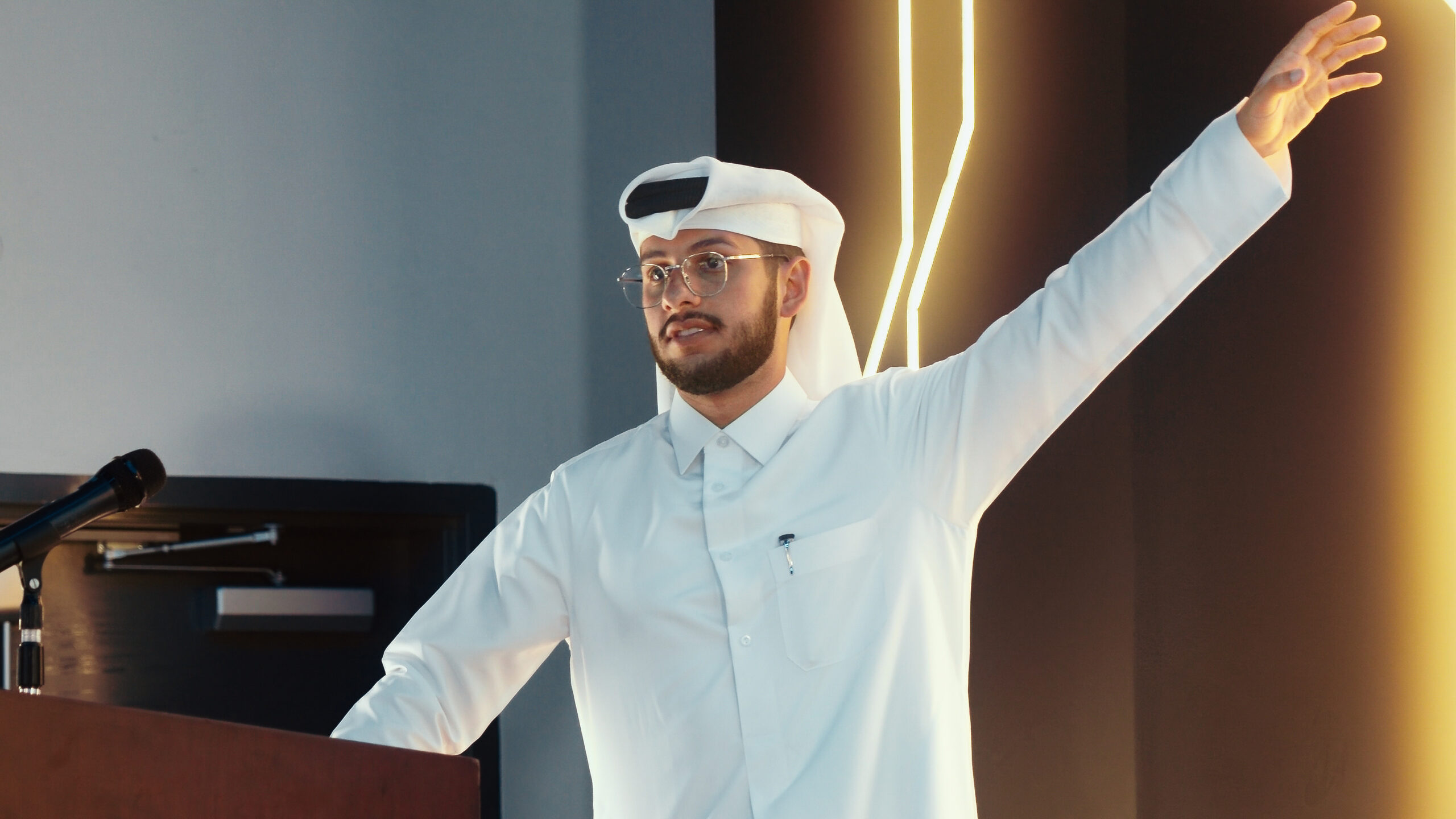
What mentors helped or inspired you to become an inventor?
My mentors who challenged my ideas inspired me to think bigger. I started inventing during a small competition at school.
I met some engineers who said that my idea was not doable. I insisted on working on it and I remember not winning in that competition, but a few years later I won several competitions internationally with the same invention. So, their challenge was my motivation.
Why is it important for younger people to be active members of society?
It is so important. If every one of us thought of a single problem that we face in our daily lives and tried to solve it with technology or other means, I think we can make the world much better.
One example can be seen from when I became an inventor. As a football player, we had an important match in the semifinals that we lost because of a wrong off-side goal by the referee. I was mad at the referee but at the same time, I can’t blame the referee. I was thinking of how we can use other tools such as technology to solve this problem and that’s how I came up with OPAS and won these awards.
Can you describe a moment that gave you hope or made you excited about the young people that you’re teaching?
Every year we have this summer camp where we give different scientific workshops to students. I remember one of the years I had a passionate student. She was working hard on her project.
Although she was young, she had knowledge that exceeded her age. A few months later, I saw her being awarded by His Highness the Amir Sheikh Tamim Bin Hamad Al Thani. It was really inspiring for me to see someone so young working with such dedication, even though many of us at her age were focused on playing. She was able to take advantage of the opportunities provided within Qatar and contribute to the country’s achievements.
Doha, the capital of Qatar, is an ever-evolving city where tradition blends seamlessly with modernity.
Q Life has compiled a guide to some of Doha’s highlights – from delectable dining options to deluxe accommodation and must-see attractions.
Here’s three places to stay, three delicious spots to eat, and three of the best things to do in Doha.
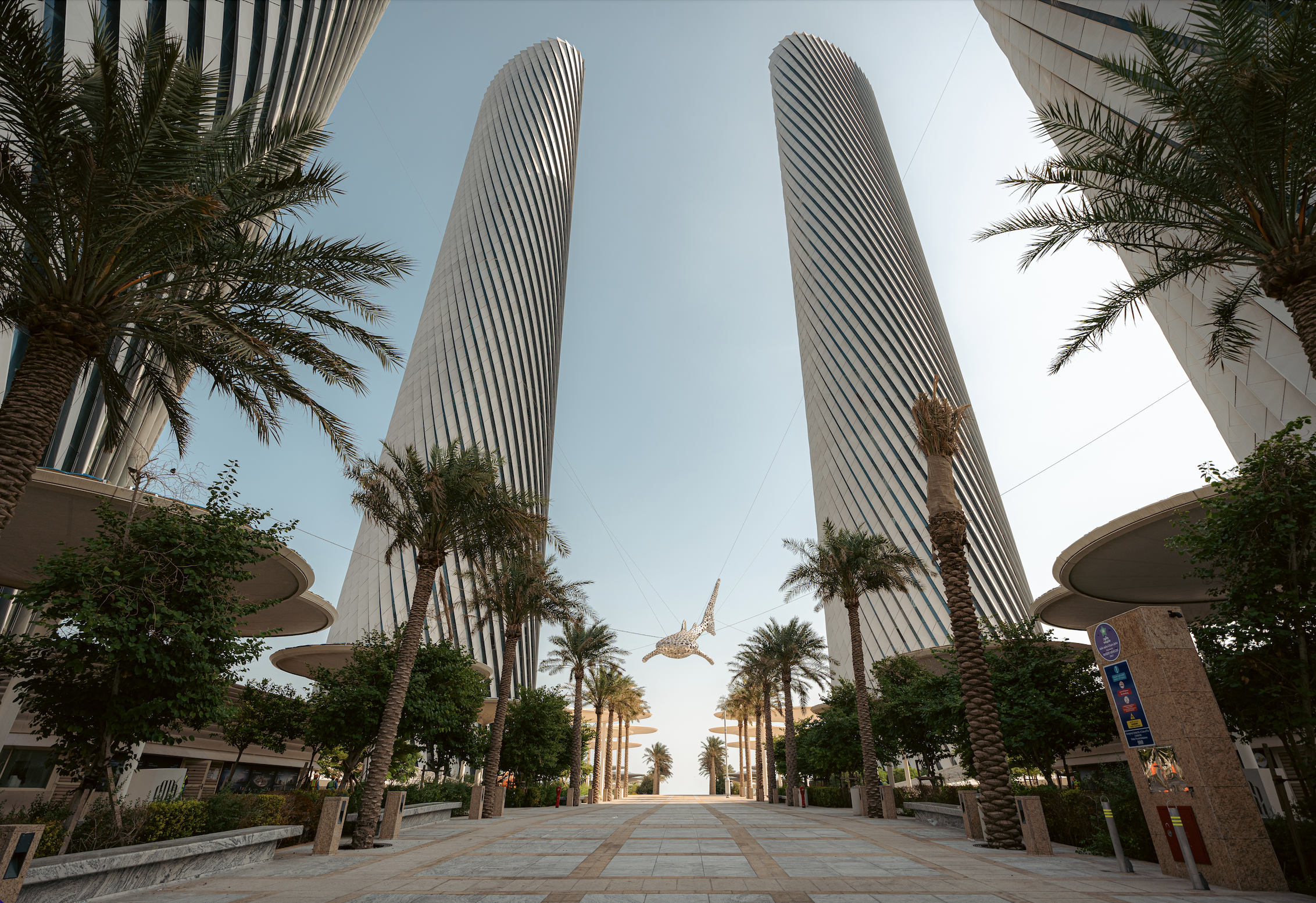
Fairmont Doha and Raffles Doha, Katara Towers, Lusail Marina District
Comfort-seekers can find one of Doha’s most luxurious places to relax in the Katara Towers, up north of the capital in Lusail City. This iconic structure, home to Fairmont Doha and Raffles Doha, features two towers designed to resemble intertwined scimitars, as seen in Qatar’s national emblem. Guests can enjoy opulent rooms with stunning views, world-class dining, and rejuvenating spas.
Al Najada Hotel, Downtown Doha
For a true Gulf experience, try Al Najada hotel, located just minutes from Doha’s historic Souq Waqif. Offering a blend of traditional Qatari design and modern architecture, the hotel is a reflection of Doha’s proud heritage and forward-looking attitude. A sanctuary away from the hustle and bustle of the city, take the time to unwind by the piazza terrace or outdoor swimming pool, whether you’re travelling for business or pleasure.
Sharq Village & Spa, Ras Abu Abboud
For families looking for an idyllic place to rest and recuperate Sharq Village offers a beachfront retreat in a unique setting. The hotel is designed as an authentic re-creation of Qatari heritage and life, imitating a desert village with a luxurious twist. Perhaps more palatial resort than traditional village though, Sharq Village has 174 rooms and suites with a sweeping 350m-long private beach.
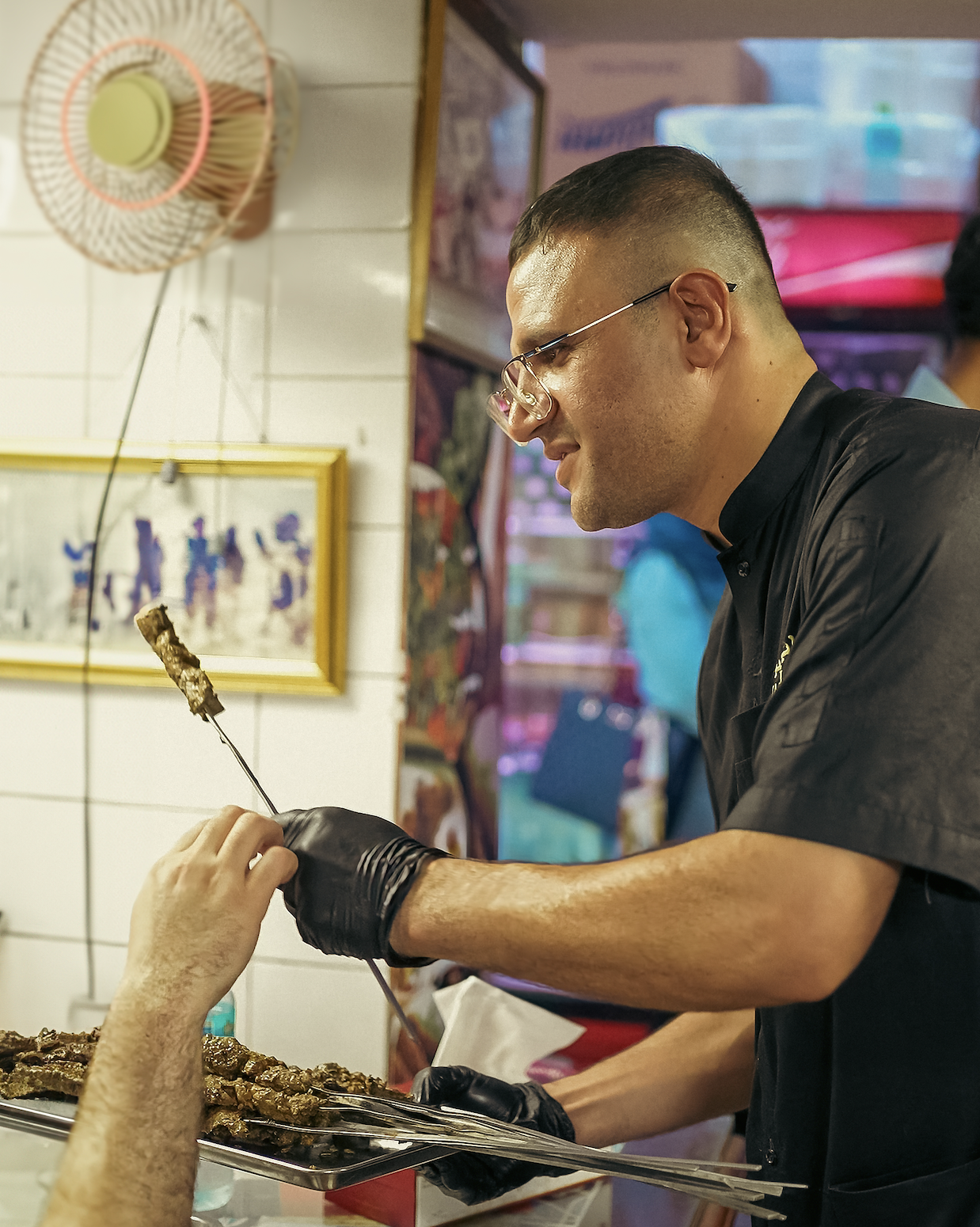
Shujaa Restaurant, Souq Waqif
Tucked into the labyrinths of Souq Waqif, amongst stores selling everything from fragrant spices to ornate jewellery, you’ll find Shujaa Restaurant. Open in the evenings, customers can enjoy a variety of grilled meats and traditional sides from outdoor benches under the night sky.
After your meal, take the chance to explore the famous souq, which has stood at Doha’s waterfront for over 250 years – and don’t forget to finish the night with some kunafa, a sweet Arabic cheese pastry.
Saasna, Downtown Msheireb
Its name derived from the Arabic word for “our origins”, Saasna takes a modern approach to traditional Qatari cuisine. Enjoy local fare such as shakshuka and lamb baddawi with an innovative twist, while taking in the bustling Msheireb Downtown.
The restaurant faces a grand square called Barahat Msheireb, presenting a chance to enjoy one of the many events that often run in the space, from open-air orchestra concerts to outdoor movie nights.
Qinwan Cafe, Downtown Msheireb
Dates are an integral aspect of Qatari culture and there’s no place quite like Qinwan Café to try the country’s finest. Founded by two brothers, the brand now travels the globe as its dates are offered to guests on Qatar Airways.
Enjoy a variety of Medjool dates with a karak tea or coffee served from a dallah, a traditional coffee pot – or take a box home as the perfect souvenir.

Old Doha Port
Wander along the wooden marina and watch the ships come and go at Mina District. This new development has transformed the Old Doha Port, creating a delightful downtown district filled with small boutiques, colourful cafés and a stunning fish market.
The Port is also just minutes away from Msheireb Downtown Doha, a model of urban regeneration that blends traditional Qatari architecture with modern sustainability. Explore the beautifully restored buildings, cultural museums, and vibrant public spaces. The Msheireb Museums provide fascinating insights into Qatar’s history and culture.
Museum-Hopping
Doha is home to several world-class museums, with exhibits on everything from fashion to sporting history. The National Museum of Qatar narrates the country’s journey through time, taking visitors through a wide-ranging historic tour of the land and its people.
Designed by famous architect I.M. Pei, the Museum of Islamic Art is home to art from across the region and ever-changing featured exhibitions, while the museum café is the perfect place to watch the sun set over the iconic Doha skyline. Other can’t-miss exhibitions are housed at the 3-2-1 Qatar Olympic and Sports Museum and M7, currently home to the Design Doha Biennial.
Escape the city
Still looking for more to do? A short drive away you’ll be able to enjoy all that Qatar’s landscape has to offer. Located in the northeast of the peninsula is Bin Ghannam Island, also known as Purple Island. Home to the country’s mangroves, visitors can kayak through the lush greenery and even spot groups of flamingos migrating from Europe to Africa.
If you fancy an Arabian adventure on land, head south into the dunes for camel-rides and dune bashing. You’ll be able to see the Inland Sea, one of just a few places in the world where the sea meets the desert!
Whether you prefer a gentle walk along the Corniche or more high-octane thrills like dune-bashing, there’s never a dull moment in Doha.
Q Life sat down with Fahad Al Obaidly, Deputy Director of Programs and Partnerships for the Design Doha Biennale, to learn more about the inaugural Design Doha event.
Earlier this year the Design Doha Biennale opened its doors for the first time.
Running until 5 August, this landmark cultural event is showcasing the region’s greatest design talents.
Highlighting the exceptional creative environment across the Arab world, Design Doha welcomes industry leaders, connects local designers with global buyers, and nurtures a new generation of innovative Arab designers.
In February 2024 Qatar Museums debuted Design Doha. Can you explain its purpose?
Our purpose is to celebrate excellence in Arab Design, providing a platform not only for Arab designers to showcase their products, but to connect with global buyers and industry leaders.
How is Design Doha making an impact?
The impact of Design Doha is shown in the connections being built between MENA region designers and international platforms. We noticed immediately how buyers, other design biennales in Milan, such as Salone del Mobile Milano, or in France, and directors, were here in Doha scouting for Arab designers.
Could you share one of your proudest moments from the event?
The proudest moment for me, personally, was when I saw the Arab designers, all of them here in Doha, connecting, collaborating, and sharing ideas. It brought me close to the mission of Design Doha and that we achieved it from the first inaugural edition.
I think that is our legacy. We made every Arab designer think of Doha as a platform for them to be celebrated, connected, and to be amplified beyond Qatar.
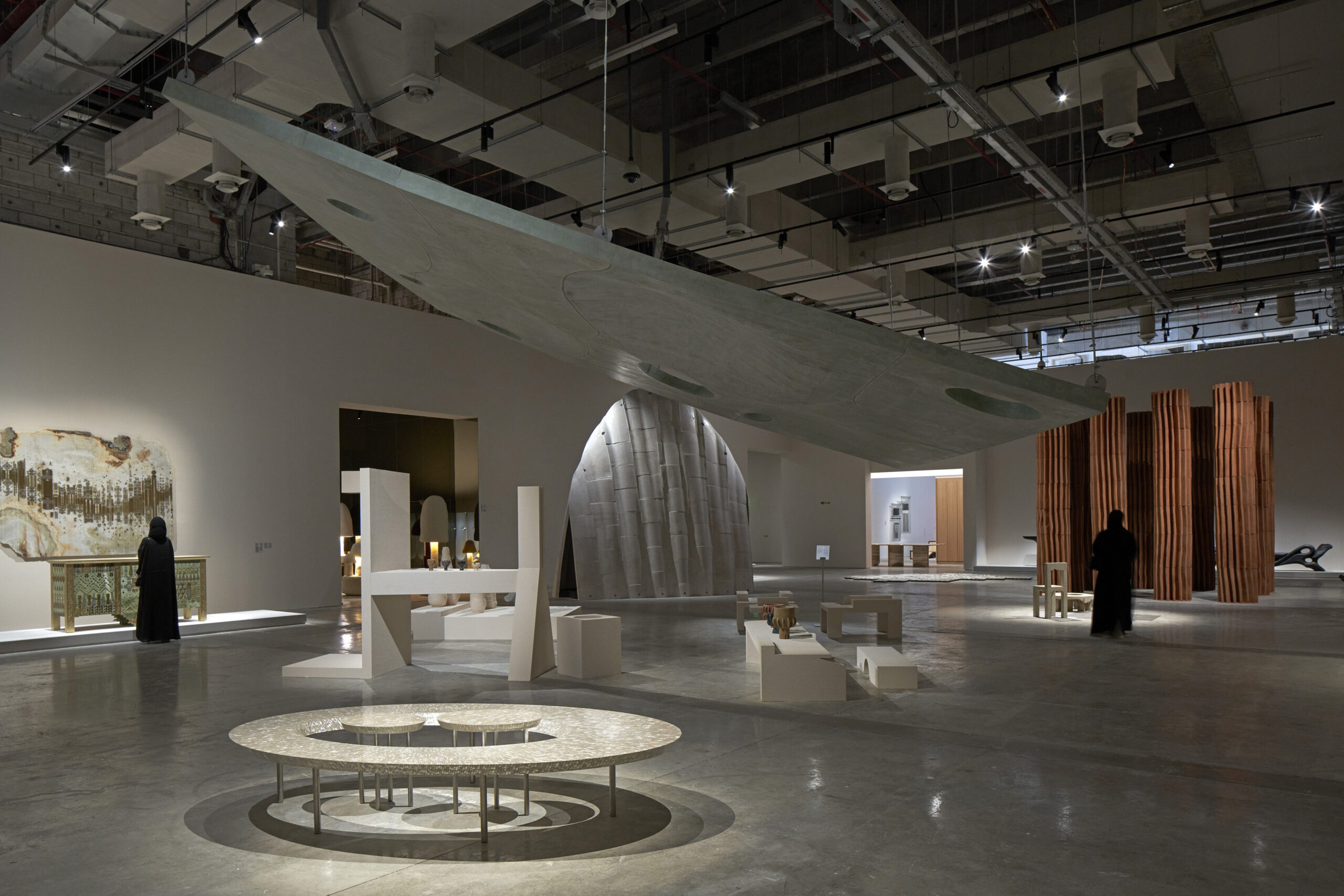
Image Courtesy of Edmund Sumner/Qatar Museums/Design Doha 2024
Can you tell us about the ‘Arab Design Now’ exhibition?
Our main exhibition is called ‘Arab Design Now’, curated by Rana Beiruti. We feature 74 Arab designers, and over 100 artworks and designs.
The creative expression of our designers comes from their land. They’re using local materials, they’re using their artisanship, craftsmanship – and that really stands out. It was refreshing to see how they interpret or translate the creative expressions through their products.
Can you tell us about some of the Qatari designs featured in the exhibit?
Abdulrahman AlMuftah, Maryam Al-Homaid, Asma Derouiche, Joe Bou Abboud – they all exhibited their work amongst the MENA region designers, and I really felt there is a synergy – there is similar creative expression across all of them, that all of them united in their creative voice.
Is there a piece that stood out to you within the exhibit?
A piece that stood out for me was the Green Bridal Chest by Naqsh Collective. The piece spoke volumes about the craftsmanship and the artisanship of Palestine, especially how they interpret the motifs, traditions, textiles, and embroidery.
Designers, when they find a way to express who they are, where they’re coming from, and bring it to the contemporary world and make it a globally appealing product – that is a success story.
What should we expect next from Design Doha? Are there any initiatives or plans to expand the event’s impact?
Design Doha will happen every two years. The inaugural edition was in 2024 and the second one will be 2026. Our plan is to cement voices from the MENA region and bring Arab designers to the global market, and I think that is something that will be ongoing through many initiatives, including design residencies, design funds, and connecting them with buyers and galleries from around the world.
DOHA, Qatar, 01 February 2024: Qatar will host a historic charity football match later this month featuring some of the world’s biggest content creators and football legends.
The inaugural Match for Hope will be held in Ahmad bin Ali Stadium, one of the Qatar World Cup 2022 stadiums, on Friday, 23 February. The match will see social media sensations Chunkz and AboFlah captain each side.
The two captains will lead teams made up of both famous content creators and World Cup legends for a showdown match in the 45,000-capacity stadium which hosted seven matches during Qatar World Cup 2022, and will host seven matches in the AFC Asian Cup Qatar 2023.

Match for Hope will be played to raise money and awareness for Education Above All (EAA) Foundation, a global non-profit organisation dedicated to transforming lives through education. All proceeds from the match will be donated to EAA projects in Mali, Rwanda, Tanzania, Pakistan, Palestine, and Sudan.
The full line-up of players will be announced in the coming weeks by event organiser Q Life, a cultural platform under the State of Qatar’s International Media Office (IMO). The event, organised in collaboration with Qatar Football Association (QFA), will also feature live music performances, with artists to be announced shortly.
Match for Hope’s Official Partners are Visit Qatar and Qatar Airways.
For all the latest news and updates, follow Q Life on Instagram, and official Match for Hope channels on X and TikTok.
Tickets go on sale from Ticketmaster and can be purchased by visiting www.match4hope.com. Fans can also donate to the cause by clicking the ‘Donate’ button on the Match For Hope website.
The match will be live streamed in Arabic and English for fans to tune in around the world.
Speaking about the match, team captain Chunkz said:
“I can’t wait to return to Qatar and captain a squad of good friends and football legends to raise money for children’s education. We’ve partnered with Q Life and Education Above All to bring you Match for Hope and it’s a privilege to help such an incredible cause and reach out-of-school children across the world.”
Speaking about the match, team captain AboFlah, 25, the MENA region’s most followed content creator, said:
“What a privilege to captain such an all-star squad here in Doha! As a youngster myself, participating in Match For Hope means much more to me than just playing football. It’s about bringing together creators like me and footballing legends from all over the world to raise funds for an important cause supporting children in need.”
The Match for Hope initiative aims to build on the legacy of the first World Cup held in the Middle East and Arab world to promote peace and education through sports.
Both Match For Hope captains are well-known for their charitable efforts and support of meaningful causes. Chunkz has been a star player in previous high-profile charity matches such as Soccer Aid and the Sidemen Charity Match, while AboFlah recently raised millions of dollars in support of refugees.
Roblox users can now explore “Qatar Adventure”, a virtual world in the metaverse featuring authentic Qatari cultural activities and some of the country’s most iconic landmarks. The experience has been launched in celebration of the first anniversary of the Qatar World Cup 2022 final and Qatar National Day.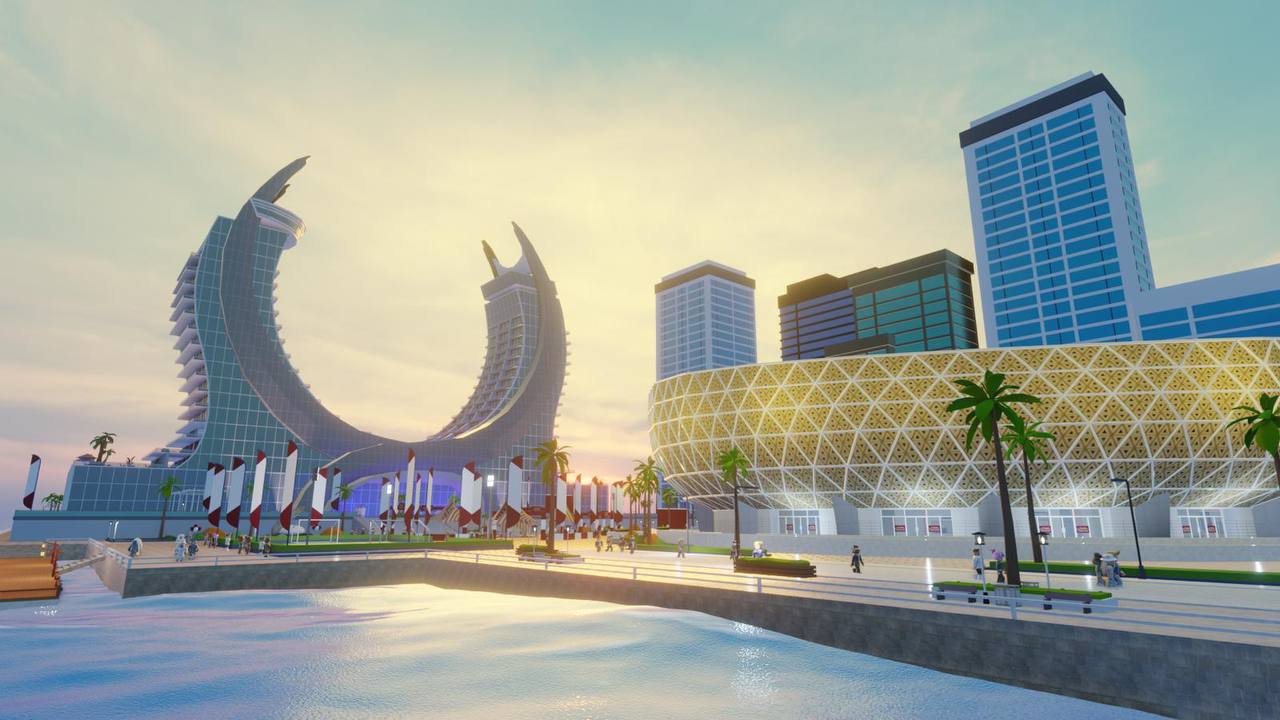
“Qatar Adventure” is accessible to all free of charge through Livetopia, a popular immersive world on Roblox, until 8 February 2024. The initiative is in partnership between Q Life, a cultural platform under the State of Qatar’s International Media Office (IMO), and developer Century Games. The experience is an expansion of Q Life’s mission to showcase Qatar to global audiences and highlight the country across sports, arts, and culture.
At the centre of the “Qatar Adventure” virtual world sits a replica of the Lusail Stadium, the venue that hosted the historic Qatar World Cup 2022 final between Argentina and France. Users can explore the iconic stadium while wearing a ‘bisht’, the traditional cloak famously worn by Argentinian national football team captain Lionel Messi as he lifted the World Cup trophy.
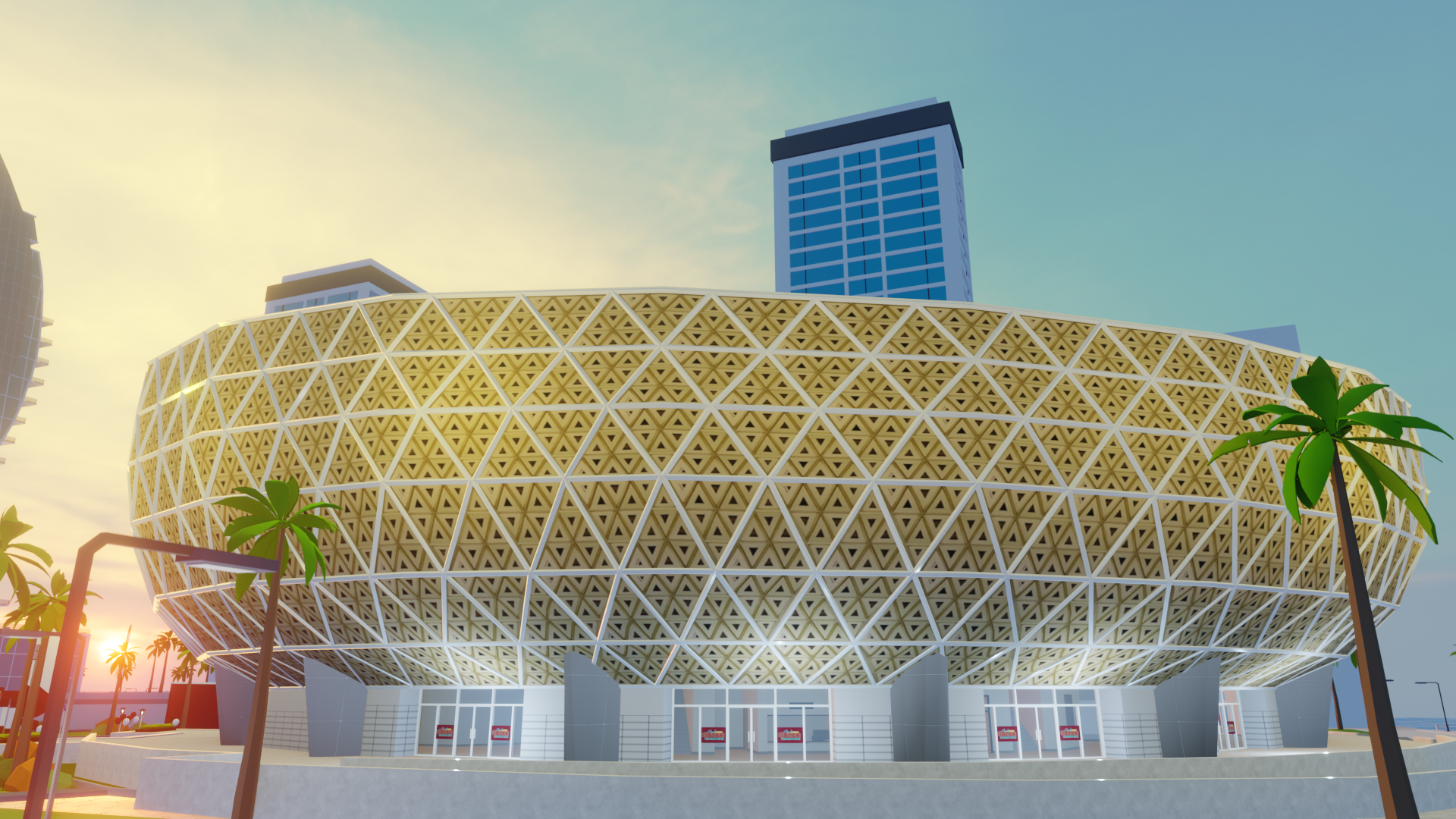
Beside the stadium are the Katara Towers, owned by Katara Hospitality, an architectural translation of Qatar’s national emblem and home in real-life to two 5-star hotels. Virtual visitors can explore the grand lobby, luxurious suites, a small museum, as well as a clothing store where they can wear traditional Qatari outfits.
“Qatar Adventure” features mini-game activities including a pearl diving challenge where users swim among whale sharks, gentle creatures that annually congregate in Qatar in some of the largest numbers anywhere in the world. Users can also participate in a slackline walk between the hotel’s two towers, as well as a scavenger hunt for the ‘dallah’, a traditional Qatari coffee pot. Several water activities are also available, including jet skiing, parasailing, and water-propelled jetpacking.
Through the various cultural activities, traditional items, and landmarks, Q Life has used interactive technology brought by the metaverse to reimagine cultural exchange and contribute to building bridges of understanding between Qatar and the world. “Qatar Adventure” highlights the country’s status as a family-friendly destination, showcasing the countless tourist activities available to all.
Visit Livetopia to explore “Qatar Adventure”!
Q Life speaks to the businessman behind the iconic bisht Lionel Messi wore to lift the FIFA World Cup Trophy.
In the heart of Qatar’s Souq Waqif stands Besht Al-Salem, a tailor established in 1958. The shop specialises in crafting the ornate Arabian cloak known as the bisht, where Ahmed Al Salem carries on the legacy of crafting this traditional garment.
View this post on Instagram
Besht Al-Salem suddenly found itself sprung into the global spotlight during the 2022 FIFA World Cup Final, when His Highness the Amir Sheikh Tamim Bin Hamad Al Thani placed one of Besht Al Salem’s bishts over the shoulders of legendary footballer Lionel Messi, following Argentina’s stunning victory over France.
An outer cloak worn by men across the region, the bisht embodies honour and heritage. “The bisht is more than just fabric; it’s a representation of appreciation and respect, reserved for special occasions”, Al Salem explains.
Crafted from high-quality materials, such as silk and wool, the intensive process of creating a bisht spans seven stages over seven to eight days. The first step is to create the central part of the bisht, called the ‘Haila,’ by hammering it into shape – this forms the foundation of the garment. Next, the tailors focus on the composition collar, which influences the overall design, followed by stitching the ‘Qitan,’ enhancing the visual appeal.
The inclusion of the bisht in the 2022 World Cup Final highlighted a piece of Arab culture that for many was little known, allowing global audiences to admire its impressive craftsmanship and unique design. The image of the garment being draped over the shoulders of one of the world’s greatest football players has become an iconic symbol of cultural exchange as Qatar hosted the first-ever FIFA World Cup in the Middle East.
Al Salem reflects on his reaction when His Highness presented Messi with a commissioned bisht, and how he felt a sense of immense pride – not only because the bisht was tailored by his shop, but because it was a Qatari-made garment.
In the days following the match, Al Salem recalls: “There was an overwhelming turnout of fans in the store”, as people rushed to share in this unique cultural moment. The brand displayed on the garment became a symbol of both historical and now contemporary tradition.
One year on from the historic 2022 World Cup, Al Salem expressess the same sense of joy and hope, “We want people to remember the championship that graced Qatar and take a deeper dive into our culture, heritage, and the spirit of the Qatari people”.
The bisht, once traditional attire only used for special occasions, has now become a link between tradition and global recognition, showcasing Qatar’s rich culture to a worldwide audience.
Fatma Al Nuaimi, the Communications and Media Executive Director at the Supreme Committee for Delivery and Legacy, was one of the people behind the successful delivery of the FIFA World Cup Qatar 2022™.
In an interview with Q Life, Al Nuaimi explains the impact of hosting the first World Cup in the region and shares her proudest moments, insights into changing perceptions of the Middle East, and hopes for the tournament’s enduring legacy.
View this post on Instagram
How did your role as the Communications Executive Director contribute to the success of the FIFA World Cup Qatar 2022™?
My role was to ensure all communication plans on behalf of Qatar, the host country, were effectively executed. This involved coordinating with local stakeholders and international partners to communicate the excitement and preparation around the first World Cup in the Arab world and the Middle East.
Was there a particular moment where you felt immense pride for the work you undertook during the World Cup?
Seeing fans from across the globe gather in Al Bayt Stadium for the opening ceremony was a deeply emotional experience for me. From a communications perspective, since we won the right to host the World Cup, there have been a lot of misperceptions about this part of the world. Considering this scepticism, I was filled with immense pride to witness the whole world celebrating the success of the tournament.
How do you think hosting the World Cup has changed perceptions of Qatar and the wider Middle East?
Hosting sporting events provides an opportunity to bridge gaps, allowing people from different backgrounds, religions, and cultures to come together and celebrate their passion for football. This World Cup was a chance to change perceptions and showcase Arab hospitality, values, and family-friendliness. The event reflected Qatari culture through various touchpoints, such as songs, opening ceremonies, and fan zone activities.
We can see how perceptions have shifted after the tournament, observing how people thoroughly enjoyed their experience. They returned with a different mindset, and we can see how it has positively impacted tourism.
How has the World Cup left a legacy within Qatar?
The legacy of the World Cup in Qatar extends beyond just infrastructure. Stadiums are now used by local clubs, contributing to increased participation and record-breaking attendance in local leagues. The impact also includes public park access, state-of-the-art facility utilisation, and training sites for sporting academies.
What were some World Cup initiatives aimed at ensuring a lasting positive impact beyond Qatar’s borders?
Initiatives like Generation Amazing and the Josoor Institute focus on human development, leadership skills, and educational excellence. Generation Amazing uses the power of football to create social change and reached over one million beneficiaries in over 75 countries. Josoor Institute works to ensure a skilled workforce within the Arab world, growing regional capabilities ahead of any future sporting events.
One year on from the World Cup, what do you hope people remember about the tournament?
I hope people remember this World Cup as the best ever, achieving many milestones – whether it be the first World Cup in the Arab world and Middle East or the most compact tournament, allowing fans to attend multiple games in a day.
The tournament was a once-in-a-lifetime experience for many, challenging perceptions and leaving a lasting impact on fans, athletes, and viewers at home.
Expo 2023 Doha has already made history as the first A1 International Horticultural Exhibition to be launched in the MENA region.
As Qatar continues to establish its position as a hub for leading international events, the expo is drawing in top scientists, officials, and visitors until 28 March 2024.
With pavilions from almost 80 countries, Non-Governmental Organisations (NGOs), and representatives, the world is uniting at Expo 2023 Doha to showcase an ambitious vision for a more sustainable future that is technology-led and promotes human progress.
Expo 2023 Doha takes place in the scenic Al Bidda Park, in close proximity to iconic Qatar attractions such as the Souq Waqif and the Corniche, offering exquisite views of the Arabian Gulf. With an area of 150,000 sqm reserved for international participants, Expo Doha 2023 is a truly global event.
Held under the theme of “Green Desert, Better Environment,” Expo 2023 Doha aims to promote sustainable innovations and combat desertification. Four main pillars guide the Expo’s many activations and pavilions that hope to address the environmental challenges facing our world today: Modern Agriculture, Technology and Innovation, Environmental Awareness, and Sustainability.
Greening the desert, once a distant challenge, is today a possibility. Sustainably cultivating trees and crops and reversing desertification is an urgent task. The Green Desert ideal is an important answer to global water, energy, and food scarcity problems. Expo 2023 Doha promotes the effective utilisation of scientific knowledge, technological advancements, and the mobilisation of both human and material resources to combat these major global challenges. The pavilions and experiences at the event are educational platforms that allow visitors to explore the latest innovations in water management, green energy, and sustainable urban development.
As the first Horticultural Expo hosted in a desert environment, the goals of this landmark event align with Qatar National Vision 2030, which positions environmental development as one of its four key pillars.
Visitors to Expo 2023 Doha will be treated to much more than the latest sustainable tech trends and desertification strategies. Art, culture and cuisine, stunning gardens, thought-provoking talks and more all make for an unforgettable experience.
Expo 2023 Doha serves as a representation of Qatar’s dedication to bringing nations together, the exchange of ideas, and promoting sustainability for a better and greener world.
View this post on Instagram
Since her early years, Shoug Khozestani has been fascinated by global affairs, and it was when she was in sixth grade that she found the perfect platform for her passion – her school’s participation in the Model United Nations (MUN). Now, as a student in Qatar Foundation’s school Qatar Academy Doha, Shoug is working on her dream of becoming a representative for her country on the diplomatic stage.
Q Life had the opportunity to sit down with Shoug to delve into her experiences.
What first inspired you to take part in The Hague International Model United Nations (THIMUN) and how long have you been involved for?
I first learned about THIMUN through the Qatar Academy Doha Model UN after-school club.
When I joined THIMUN Qatar, I was immediately captivated. It was for me and many other students an opportunity to start creating change on a small scale, and eventually develop our critical analysis and leadership skills to be in a valued position to enact real change within the world.
I’ve been taking part in THIMUN Qatar since 2019, and participating at an executive level since 2021.
What is the most important skill that THIMUN Qatar has taught you?
The list of things I have learned through THIMUN Qatar is endless. My leadership, communication, learning, and problem-solving skills have been put to the test time and time again, which has shaped me into an adaptable, open-minded thinker – and above all, a leader.
What has been your favourite memory since taking part in THIMUN Qatar?
The final executive debrief at THIMUN Qatar 2023 was a particular highlight for me.
The last day of the three-day THIMUN Qatar conference means a lot to us emotionally and mentally. This year, I remember, all of us, huddled in a room, surrounded by empty coffee cups, after many hours of restlessness and three long days, we collectively let out a sigh of relief as the conference ended. We looked around quietly taking in the scene. There were feelings of pride, happiness, confusion even, joy, and acknowledging finality – a sweet end.
This moment is very vivid in our minds, and will probably stay with us forever. It’s a reminder of our determination, hard work, effort, and commitment – everything that THIMUN Qatar is about.
How has Qatar Foundation provided you with opportunities to promote youth involvement in global affairs?
Qatar Foundation provides a lot of opportunities for the youth in Qatar to build a sense of community that draws from global affairs, interconnectedness, and unity. THIMUN Qatar is only one of the many initiatives developed to connect Qatar’s youth to different people around the world.
Personally, I’ve also had the chance to represent Qatar Foundation in the TED 2022 conference in Vancouver, Canada. This was an effort to promote TEDinArabic – an initiative launched by Qatar Foundation to share ideas emanating from the Arab world.
To conclude, how would you describe your experience in three words?
Awakening. Electric. Worthwhile.
View this post on Instagram
Qatar is a thriving hub for arts and culture. Through developments such as the National Museum of Qatar, numerous art exhibitions, and architecturally compelling buildings, Qatar has paved the way for new artistic horizons in the region. A unique feature of Qatar’s art scene is the dedication to empowering emerging talents through artist residency programmes.
Doha’s Fire Station, literally a repurposed former fire station, is a testament to Qatar pushing creative boundaries and embracing local talents. It offers an annual world-class artist residency programme, Artist in Residence (AIR), designed to nurture local talents by giving them the opportunity to sharpen their skills through mentorship, production support and studio space. Artists are then given the opportunity to exhibit their works at the completion of their residency in an exhibition held in Fire Station’s Garage Gallery.
As Saida Al-Khulaifi, Exhibition Curator of the Fire Station, explains: “Guided by our commitment to fostering creative talent in Qatar, our programme provides a dedicated nine-month period for artists to refine their artistic practices across disciplines such as visual arts, photography, film, sound art and design”.
“Beyond individual growth, the programme offers a unique platform for artists to forge connections, drawing mutual inspiration from one another.”
Since its inception in 2015, AIR has been a great success, with more than 92 participating artists. It has also grown to include a three-month residency at the well-known Cite Internationale des Arts in Paris and in New York City at Studio 209 NY.
View this post on Instagram
The Fire Station recently announced the opening of ‘The Present: The Future of the Past’ exhibition, which showcases the work of AIR alumni. The exhibition reveals the various stages of the alumni’s creative journey alongside their final artwork.
The AIR programme continues to grow year-on-year, with its 8th iteration currently featuring 17 artists from eight different countries.